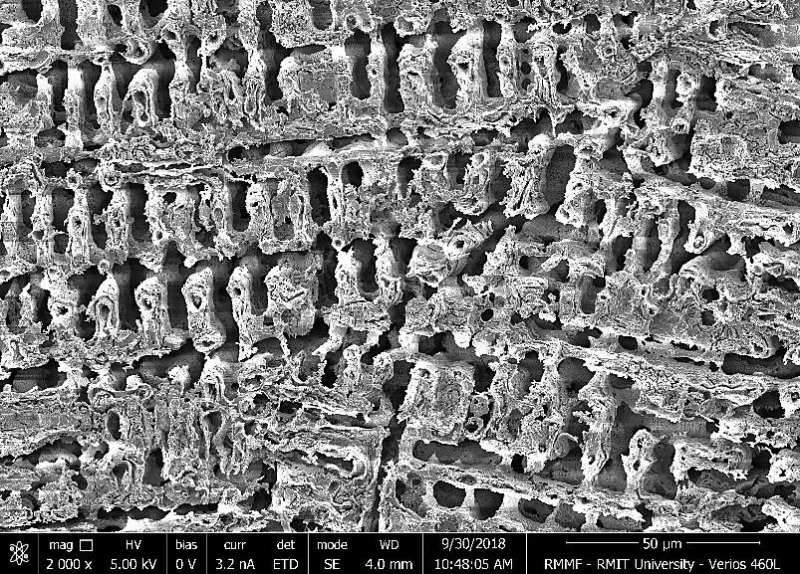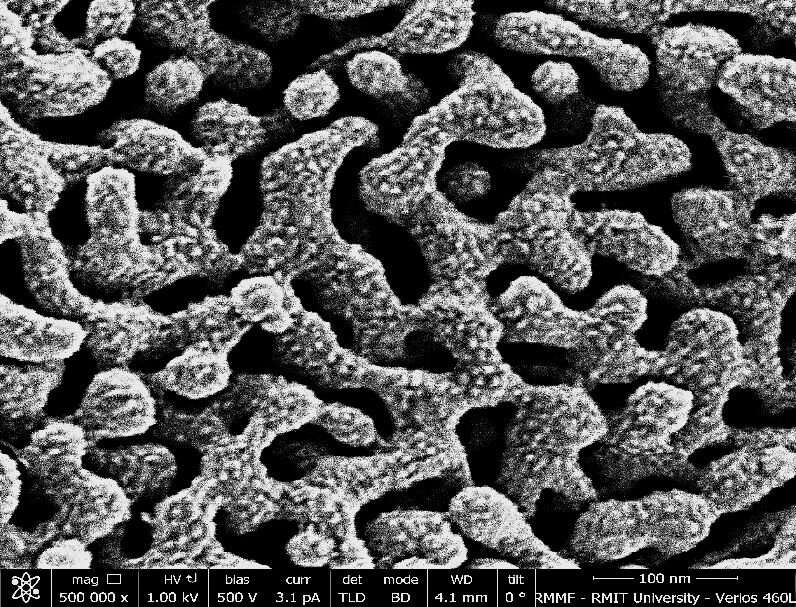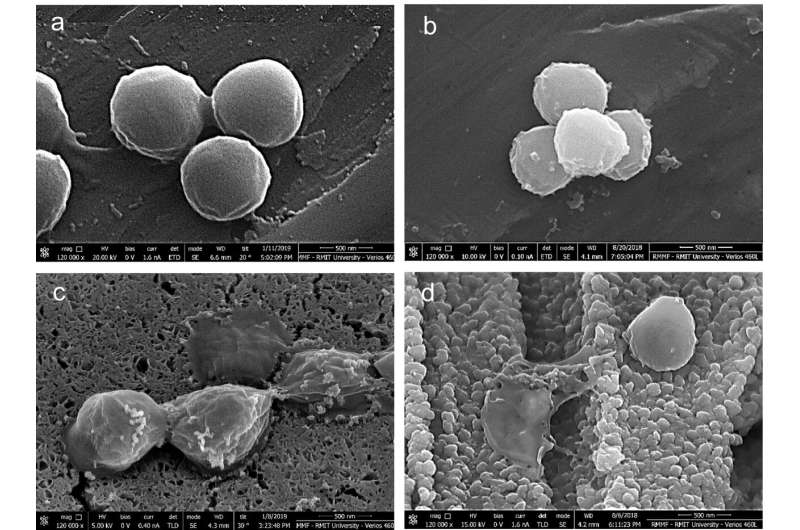New copper surface eliminates bacteria in just two minutes

A new copper surface that kills bacteria more than 100 times faster and more effectively than standard copper could help combat the growing threat of antibiotic-resistant superbugs.
The new copper product is the result of a collaborative research project with RMIT University and Australia's national science agency, CSIRO, with findings just published in Biomaterials.
Copper has long been used to fight different strains of bacteria, including the commonly found golden staph, because the ions released from the metal's surface are toxic to bacterial cells.
But this process is slow when standard copper is used, as RMIT University's Distinguished Professor Ma Qian explained, and significant efforts are underway by researchers worldwide to speed it up.
"A standard copper surface will kill about 97 percent of golden staph within four hours," Qian said.
"Incredibly, when we placed golden staph bacteria on our specially designed copper surface, it destroyed more than 99.99 percent of the cells in just two minutes."
"So not only is it more effective, it's 120 times faster."
Importantly, said Qian, these results were achieved without the assistance of any drug.
"Our copper structure has shown itself to be remarkably potent for such a common material," he said.

The team believes there could be a huge range of applications for the new material once further developed, including antimicrobial doorhandles and other touch surfaces in schools, hospitals, homes and public transport, as well as filters in antimicrobial respirators or air ventilation systems, and in face masks.
The team is now looking to investigate the enhanced copper's effectiveness against SARS-COV-2, the virus that causes COVID-19, including assessing 3D-printed samples.
Other studies suggest copper may be highly effective against the virus, leading the US Environmental Protection Agency to officially approve copper surfaces for antiviral uses earlier this year.
Unique structure brings more copper to the fight
Study lead author, Dr. Jackson Leigh Smith, said the copper's unique porous structure waskey to its effectiveness as a rapid bacteriakiller.
A special copper mold casting process was used to make the alloy, arranging copper and manganese atoms into specific formations.
The manganese atoms were then removed from the alloy using a cheap and scalable chemical process called "dealloying," leaving pure copper full of tiny microscale and nanoscale cavities in its surface.
"Our copper is composed of comb-like microscale cavities and within each tooth of that comb structure are much smaller nanoscale cavities; it has a massive active surface area," Smith said.

"The pattern also makes the surface super hydrophilic, or water-loving, so that water lies on it as a flat film rather than as droplets."
"The hydrophilic effect means bacterial cells struggle to hold their form as they are stretched by the surface nanostructure, while the porous pattern allows copper ions to release faster."
"These combined effects not only cause structural degradation of bacterial cells, making them more vulnerable to the poisonous copper ions, but also facilitates uptake of copper ions into the bacterial cells," Smith said.
"It's that combination of effects that results in greatly accelerated elimination of bacteria."
Dr. Daniel Liang of CSIRO said researchers across the world were looking to develop new medical materials and devices that could help reduce the rise of antibiotic-resistant super bugs by reducing the need for antibiotics.
"Drug-resistant infections are on the rise, and with limited new antibiotics coming onto the market, the development of materials resistant to bacteria will likely play an important role in helping address the problem," Liang said.
"This new copper product offers a promising and affordable option to fighting superbugs, and is just one example of CSIRO's work in helping to address the growing risk of antibiotic resistance."
More information: J.L. Smith et al, Robust bulk micro-nano hierarchical copper structures possessing exceptional bactericidal efficacy, Biomaterials (2021). DOI: 10.1016/j.biomaterials.2021.121271
Journal information: Biomaterials
Provided by RMIT University





















